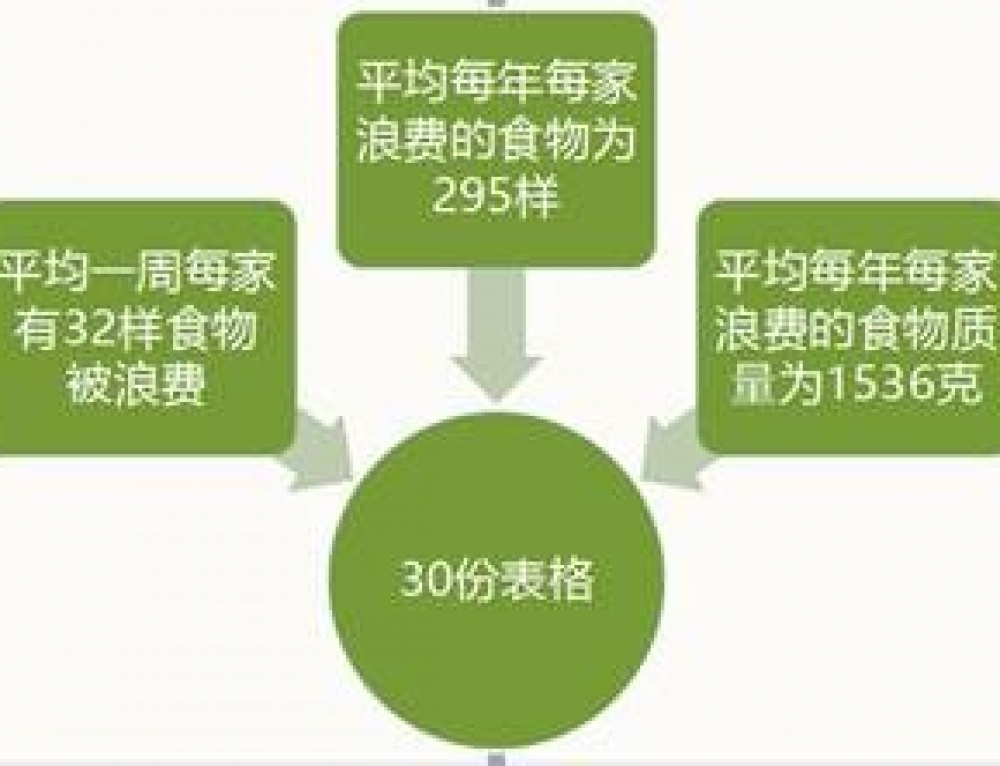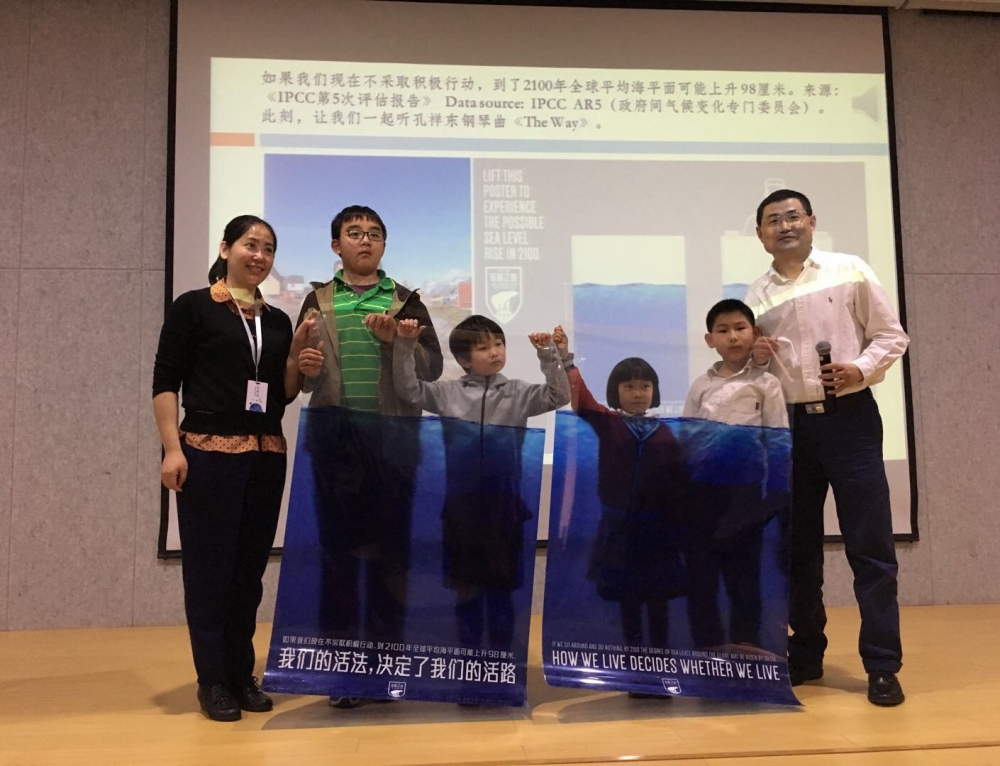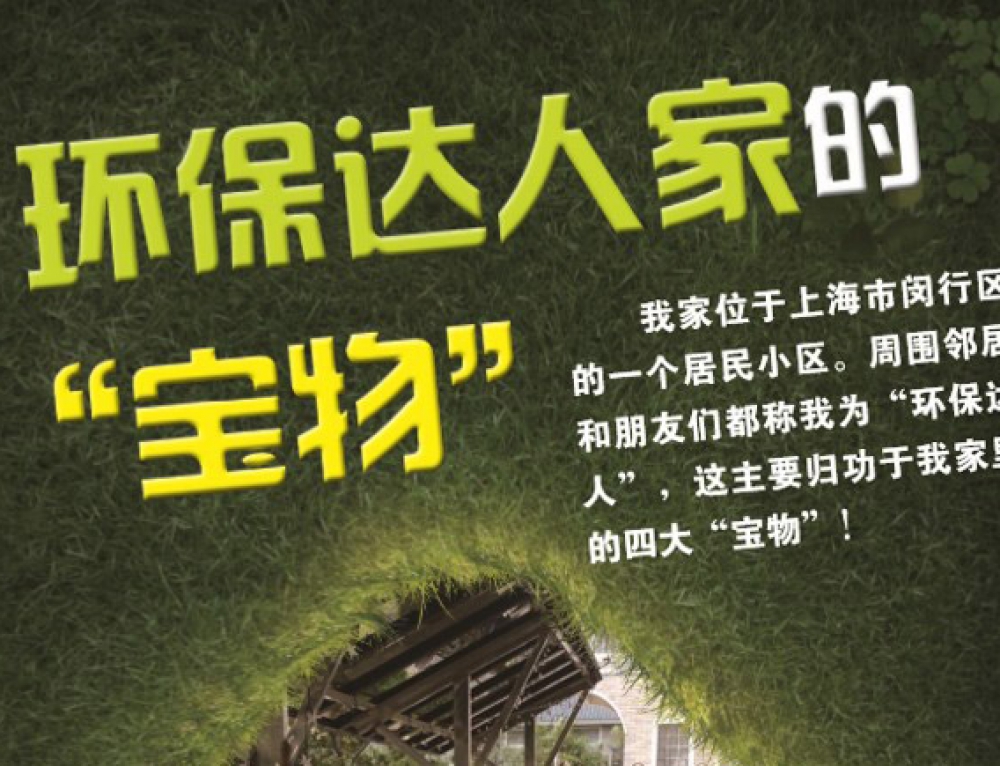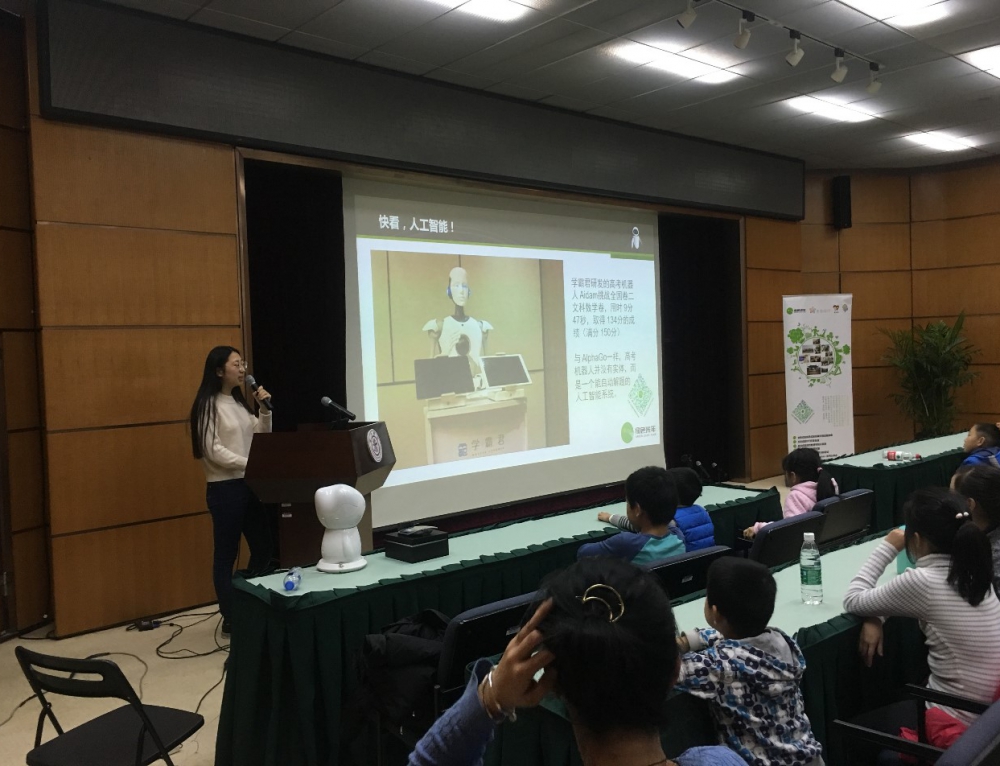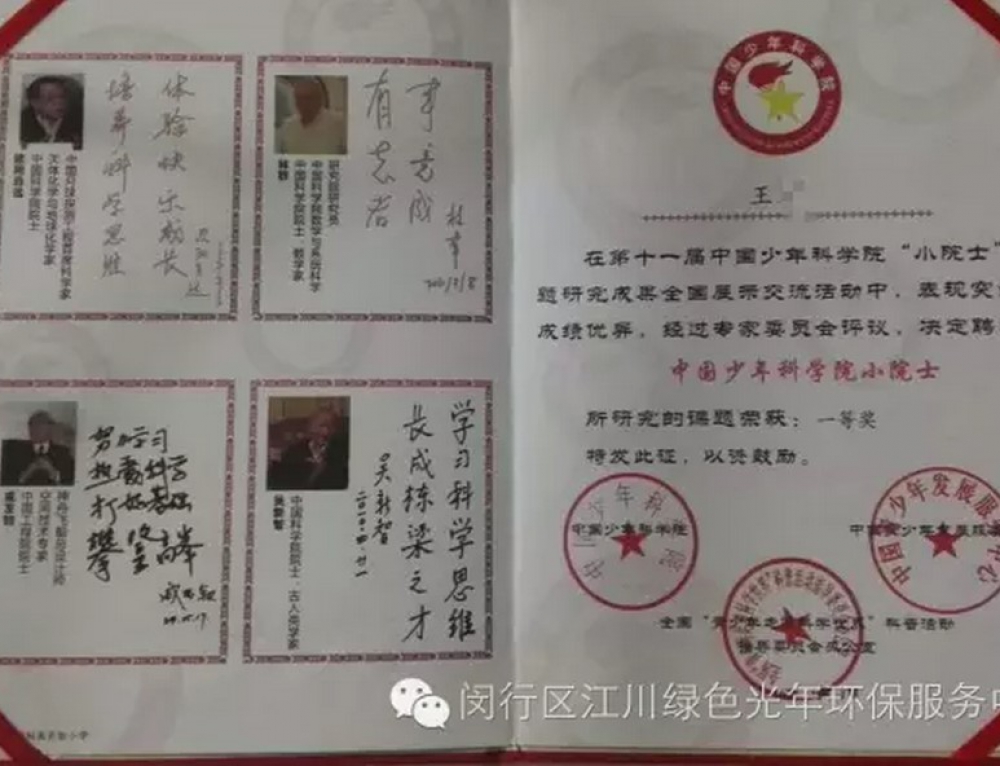Project Description
The brainstorming-designers are invited to create creatives based on recycled materials and practical daily necessities, meanwhile integrate environmental protection and low-carbon knowledge into the production process.
Lesson 1: Unique DIY’s Green Light
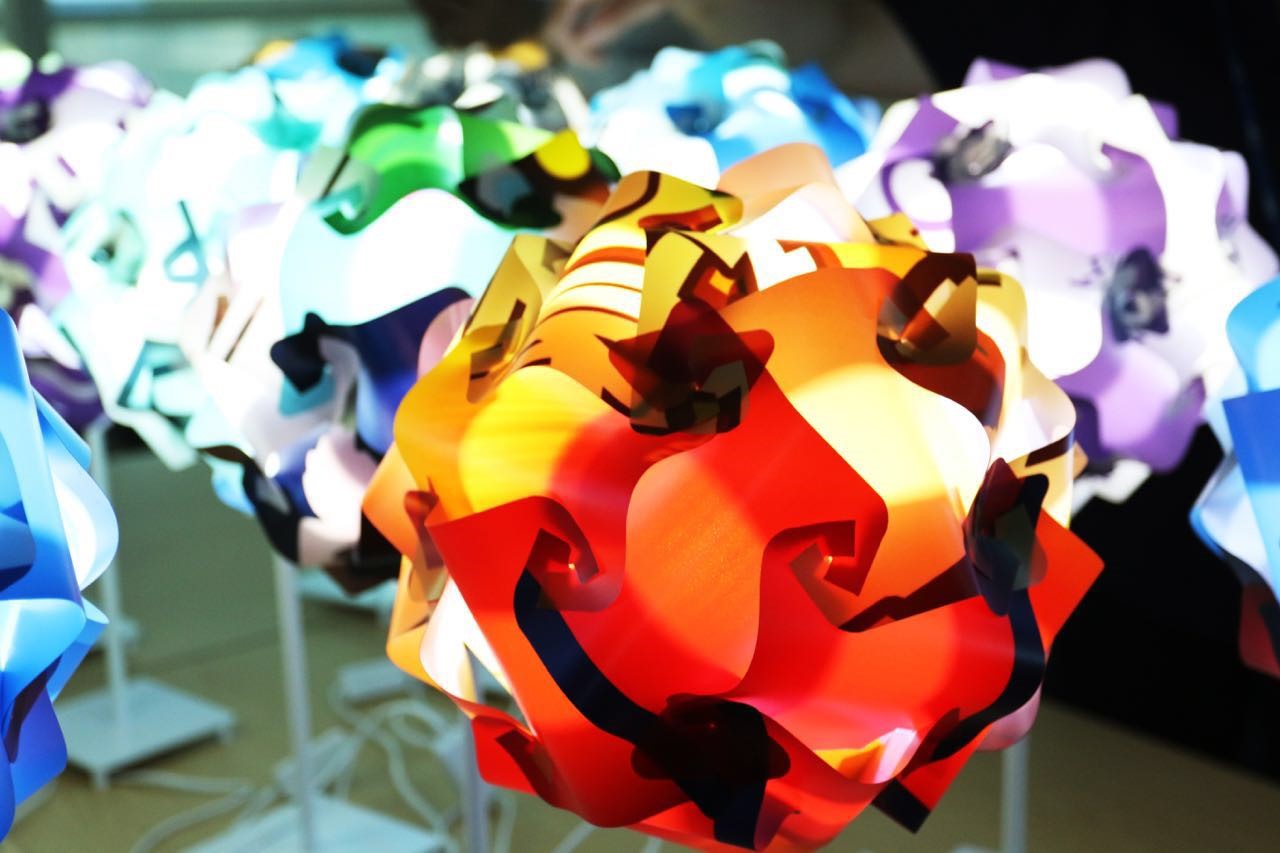
Description: Environmental solid art projects reduce urban solid waste through art and design activities. The characteristics of the light-box poster PVC material are heat-resistant, light-transmissive, and colorful. After the discarded light box posters are cleaned, disinfected, and cut into a fixed shape,everyone can play it like a lego toy and make a unique, creative and energy-saving lamp. Each use of a green light can at least reduce the environmental pollution of a square meter light box piece. Regular lamp holder, regular LED energy-saving lighting.
Lesson 2: DIY for Your Own Air Purifier
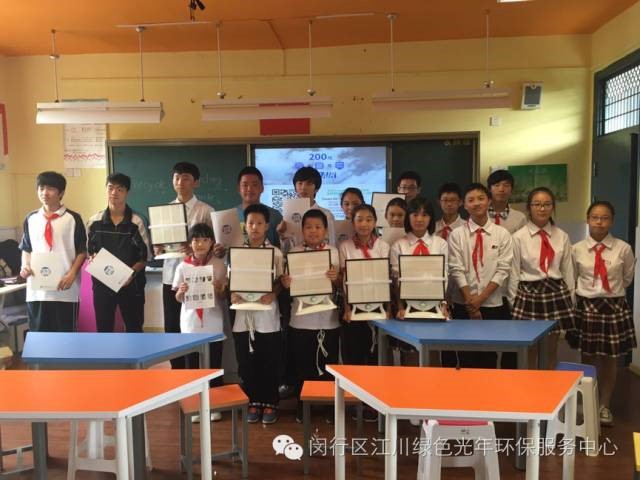
Description: With the understanding of the haze and the mechanism of how the air purifier works, the knowledge of whether masks work or not and how to protect the health of ourselves and our families. Making an on-site simple air purifier can be taken home immediately to reduce the home’s PM 2.5. Finally, you can test your own new purifier on the spot with a laser tester!
Lesson 3: DIY Your Own Ecology Bottle

Description: A hand-made water ecological system with water, aquatic plants and aquatic animals.
Appropriate crowds: Pupils who are young or below the fourth grade, parent-child environmental protection course, elementary school environmental protection course
Lesson 4:Transformation of the Old Clothes—-DIY Own Coasters and Mats 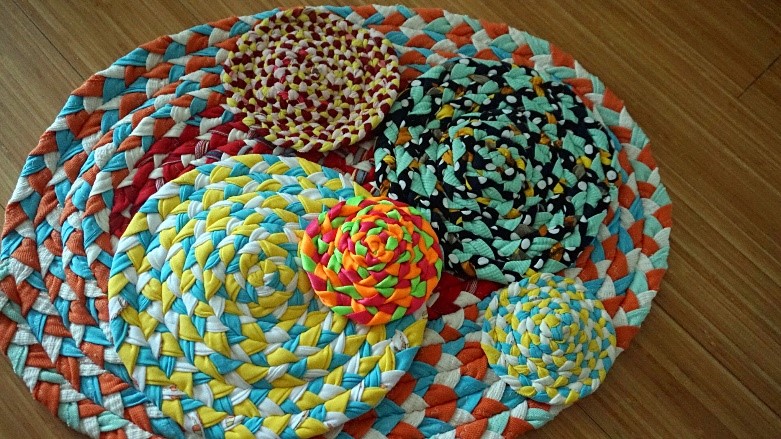
Description: Old T-shirt——gave it away?
Actually, we can use old T-shirts to weave our own colorful coasters and floor mats! In the process, the course will mention the pollution of textile industry for and the environmental impact of a piece of cloth during the life cycle.
Appropriate people: teenagers, family members.
Lesson 5: Intimate Contact with Superconductor Suspension Experiments
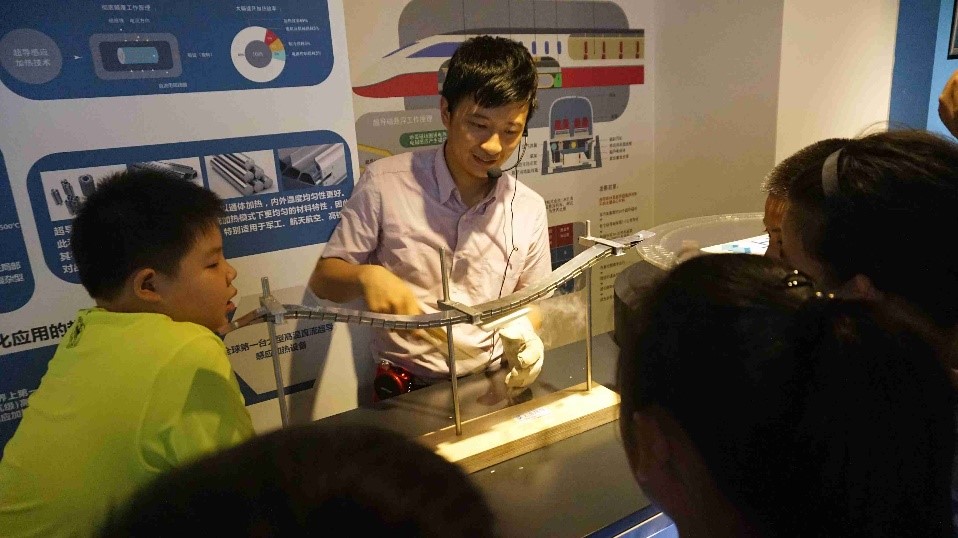
Description: Magnets can be fabricated using superconductivity of materials, applied in motors, high-energy particle accelerators, magnetic levitation transport, controlled thermonuclear reactions, energy storage, etc. Power cables can be produced for large-capacity transmission (power up to 10000MVA); Communication cables and antennas can be made that outperform conventional materials.
This experiment will show a variety of magnetic levitation experiments, which require the use of superconductors, liquid nitrogen and special experimental equipment. After the explanation, the children will experience the mystery of suspension personally.
Lesson 6: Cutting Apples

Description: Using an apple as a model to introduce children of the Earth’s structure. Then use the Western knife that will not hurt the hand and guide the children to cut the “earth” into different pieces in proportion. Finally, point out how many resources of the Earth’s surface that can be used for food. Through this interactive exercise, children can understand the scarcity of available resources of the earth from the process of eating and playing. Before the reality that the earth was “empty of the body” , the children have the sense of responsibility and mission of saving resources.
Appropriate people: Parent-child environmental protection manual course, primary and secondary school environmental protection course
Lesson 7: Paper-Rolling (Protection of wildlife/anti-animal performances)
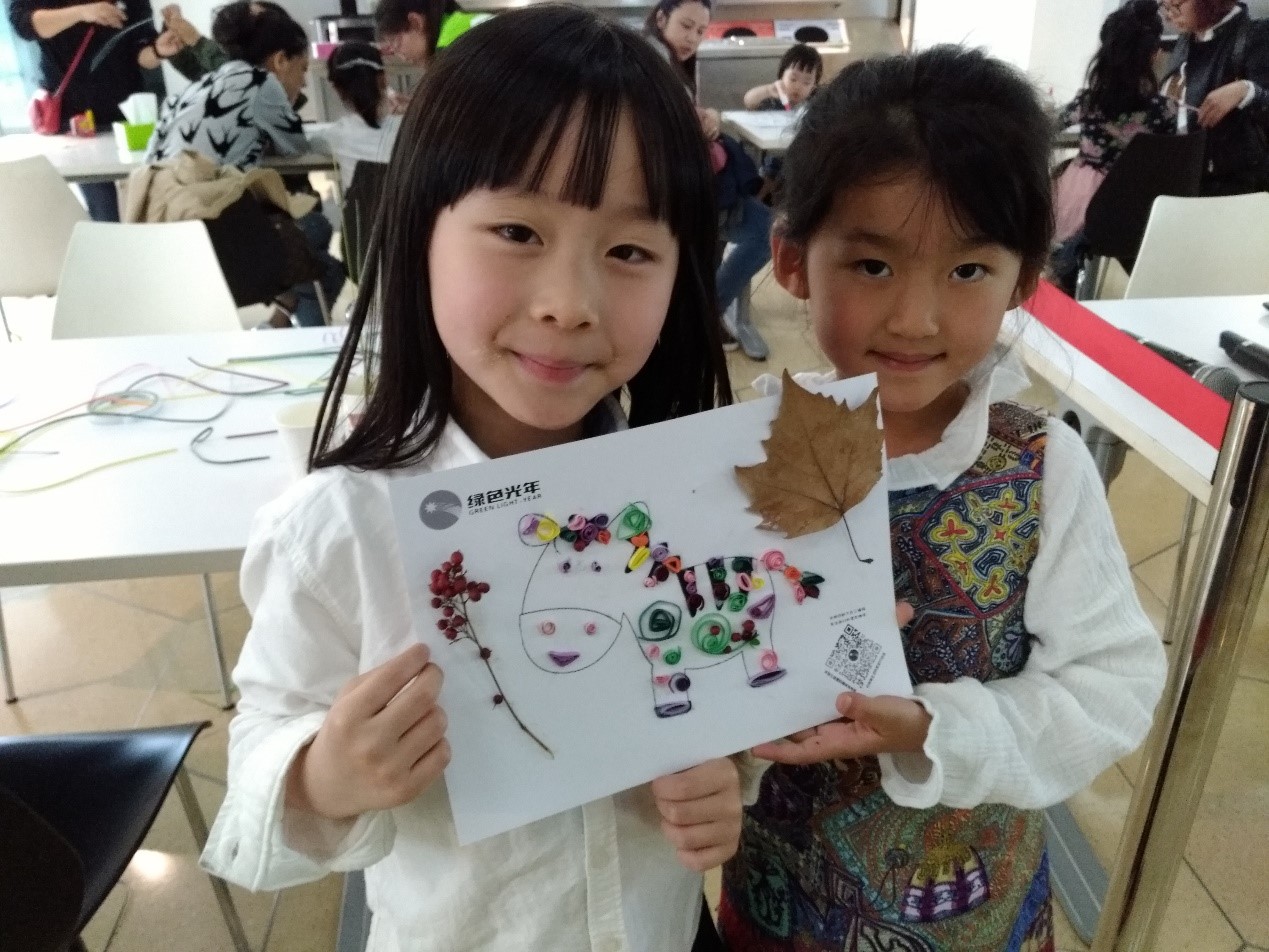 Description: Use an interactive approach to preach the knowledge of wildlife conservation and guide the children to choose their favorite animal images of an endangered species to pay attention to in wildlife conservation by making Paper-Rolling. The last step is to let them show their work together and take a group photo.
Description: Use an interactive approach to preach the knowledge of wildlife conservation and guide the children to choose their favorite animal images of an endangered species to pay attention to in wildlife conservation by making Paper-Rolling. The last step is to let them show their work together and take a group photo.
Appropriate people: Parent-child environmental protection manual course, primary and secondary school environmental protection course
Lesson 8: DIY a Natural Face
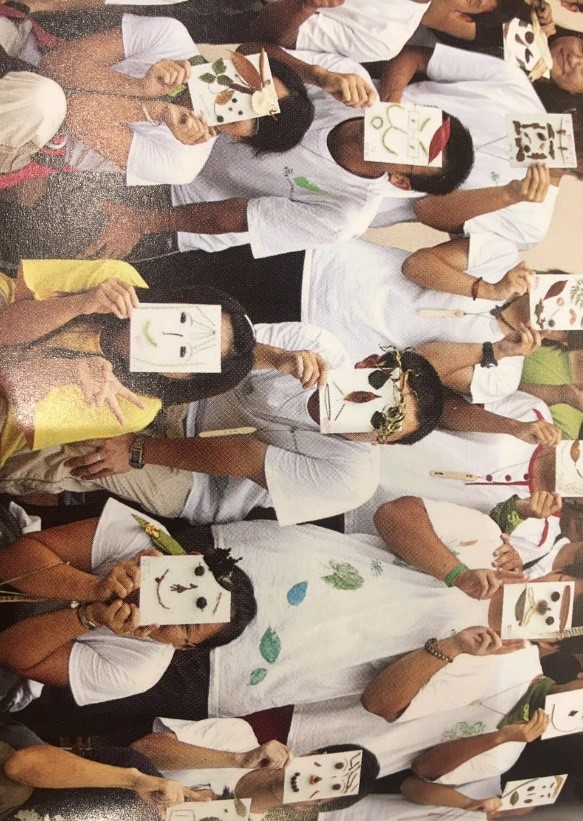 Description: Each person uses nature materials to make a face of one own. Prepare for one week and collect objects from nature which is the plants around you and completely dry for creation. Meanwhile, learn the knowledge of both botany and species characteristics.
Description: Each person uses nature materials to make a face of one own. Prepare for one week and collect objects from nature which is the plants around you and completely dry for creation. Meanwhile, learn the knowledge of both botany and species characteristics.
Appropriate people: Parent-child environmental protection manual course, primary and secondary school environmental protection course
Lesson 9: DIY Own Fossil Vein Monument
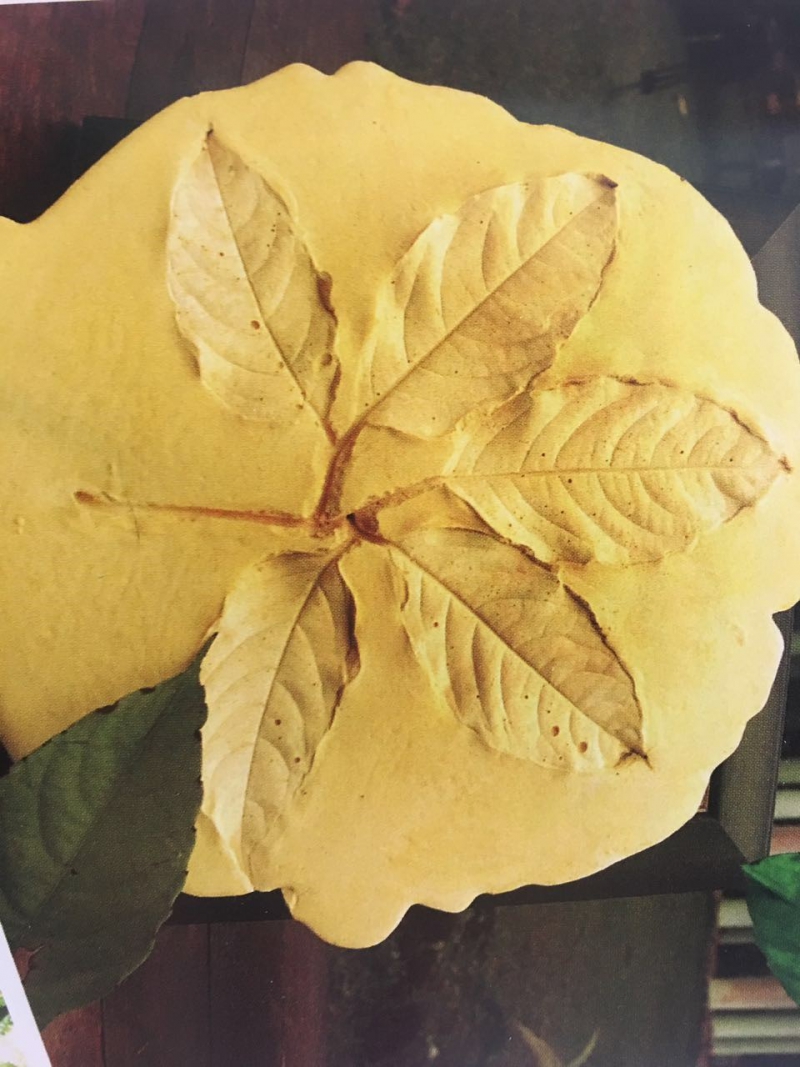 Description: Create your own veined fossil monuments with plaster and your favorite leaves which is a permanent, touchable natural record item.
Description: Create your own veined fossil monuments with plaster and your favorite leaves which is a permanent, touchable natural record item.
Appropriate people: Parent-child environmental protection manual course, primary and secondary school environmental protection course
Lesson 10: DIY Own Painting Stone
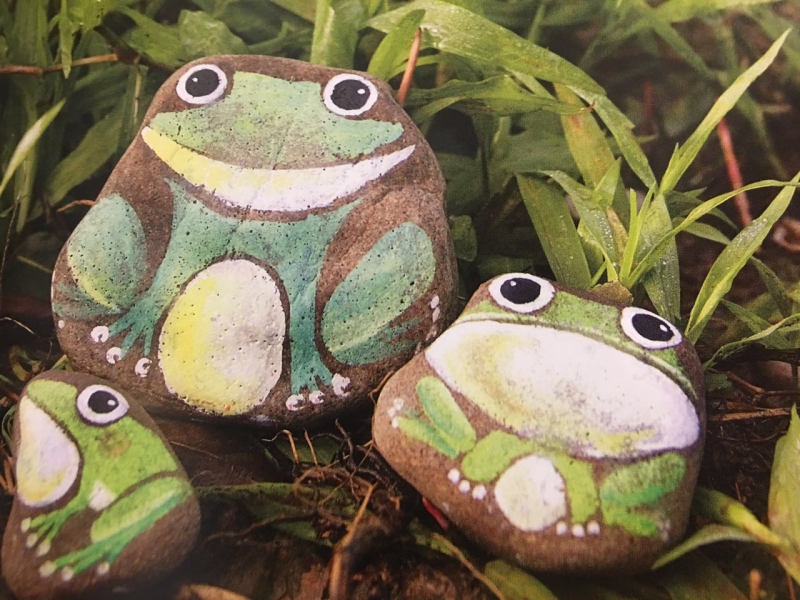 Description: Designing stones in the brain that oneself wants, draws one’s own painting pebble ornaments with acrylic paint.
Description: Designing stones in the brain that oneself wants, draws one’s own painting pebble ornaments with acrylic paint.
Appropriate people: Parent-child environmental protection manual course, primary and secondary school environmental protection course
Lesson 11: Renovation of a Disposal Jean
 Description: The old jeans will be transformed into a bag-like style. Then the single pieces will be connected into a carpet. The love carpet will consist of 100,000 pieces of denim. All the single bags can be filled with children’s blessings on the earth. It is suitable for making an art souvenir for school features.
Description: The old jeans will be transformed into a bag-like style. Then the single pieces will be connected into a carpet. The love carpet will consist of 100,000 pieces of denim. All the single bags can be filled with children’s blessings on the earth. It is suitable for making an art souvenir for school features.
Appropriate people: Parent-child environmental protection manual course, primary and secondary school environmental protection course
Lesson 12: Interactive Waste Classification Course 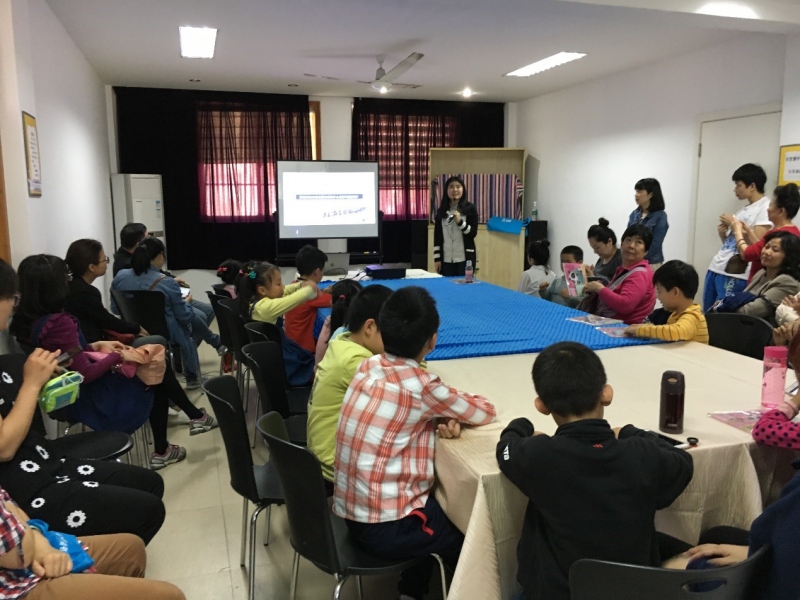 Description: List the objects of life one by one, let the children feel and smell them on the spot to feel their texture and materials, then, tell them the chemical composition of the materials and their treatment methods. Specific content includes plastic products, packaging materials, daily necessities, official supplies and so on. There will be some small quizzes in the course to increase interactivity.
Description: List the objects of life one by one, let the children feel and smell them on the spot to feel their texture and materials, then, tell them the chemical composition of the materials and their treatment methods. Specific content includes plastic products, packaging materials, daily necessities, official supplies and so on. There will be some small quizzes in the course to increase interactivity.
In this course, it can also intersperse some of the manual lessons in the aforementioned courses. In addition, this course also specifically designed the courseware for food waste and food waste reduction topics for 4 hours.
Lesson 13: Student self-made simple fish and poultry symbiosis system 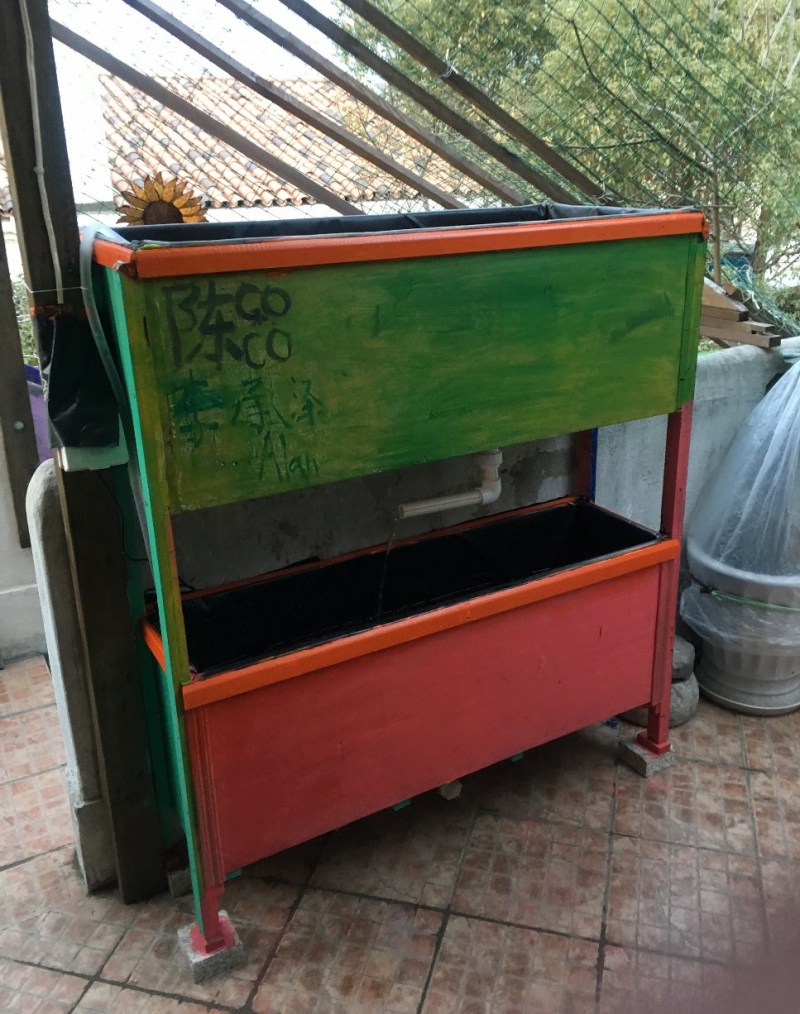 Description: A simple version of the fish and poultry symbiosis system was developed. “No changing-water, no fertilizer.”
Description: A simple version of the fish and poultry symbiosis system was developed. “No changing-water, no fertilizer.”
Appropriate people: Parent-child environmental protection course, primary and secondary school environmental protection course
Lesson 14: Flying Wagon Boats
Description: Learn structure knowledge, experience natural material production and feel the beauty created by light structure and wind.
Appropriate people: Parent-child environmental protection class, primary and secondary school environmental protection class
Lesson 15: Interactive energy-saving electricity mix and match residue battery + zero waste

Description: From the perspective of saving electricity, the fruit juice can be used for drinking and the fruit residue can be used as a slag battery. In the end, the remaining skin is composted or made into an enzyme.
Lesson 16: Artificial Intelligence Lectures for School/Community
Description:
30-minute lecture: PPT content explanation (PPT is authorized by Shanghai Jiaotong University human-machine dialogue laboratory):
- History and important milestones of artificial intelligence development
- Artificial intelligence manifestations
- Application of artificial intelligence in life and industrial development
- Future development trend of artificial intelligence
30-minute live show and experience:
- Intelligent vehicle robots:
Vehicles that guarantee driving safety and driving by “mouth”: Smart robots that integrate navigation, listen to songs, send WeChat and call full voice control
- Smart Home Service Robots: Children’s educational robots that can be used at home for full voice control
- Man-machine dialogue system in language teaching
Appropriate people: community residents, primary and secondary school students

